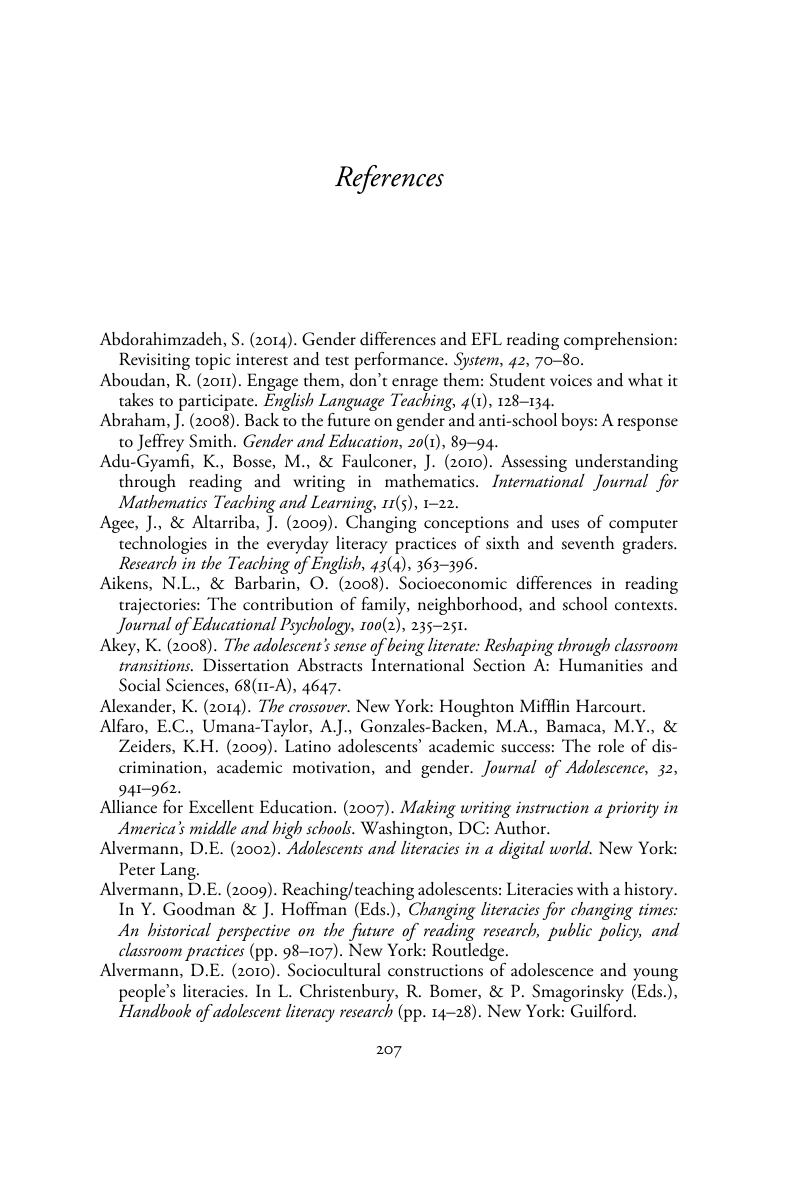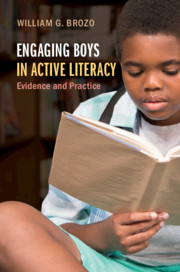Book contents
- Engaging Boys in Active Literacy
- Engaging Boys in Active Literacy
- Copyright page
- Contents
- Figures
- Acknowledgements
- Introduction
- Chapter 1 Boys’ Reading and Learning: Identifying the Issues
- Chapter 2 Boys and Literacy: A Closer Look
- Chapter 3 Boys’ Masculinities and Identities: Evidence and Practice
- Chapter 4 Socioeconomics and Boys: Evidence and Practice
- Chapter 5 Immigrant and New Language Learner Boys: Evidence and Practice
- Chapter 6 Literacy Engagement and Boys: Evidence and Practice
- Chapter 7 Boys and New Literacies: Evidence and Practice
- Chapter 8 Boys and Writing: Evidence and Practice
- References
- Index
- References
References
Published online by Cambridge University Press: 18 May 2019
- Engaging Boys in Active Literacy
- Engaging Boys in Active Literacy
- Copyright page
- Contents
- Figures
- Acknowledgements
- Introduction
- Chapter 1 Boys’ Reading and Learning: Identifying the Issues
- Chapter 2 Boys and Literacy: A Closer Look
- Chapter 3 Boys’ Masculinities and Identities: Evidence and Practice
- Chapter 4 Socioeconomics and Boys: Evidence and Practice
- Chapter 5 Immigrant and New Language Learner Boys: Evidence and Practice
- Chapter 6 Literacy Engagement and Boys: Evidence and Practice
- Chapter 7 Boys and New Literacies: Evidence and Practice
- Chapter 8 Boys and Writing: Evidence and Practice
- References
- Index
- References
Summary

- Type
- Chapter
- Information
- Engaging Boys in Active LiteracyEvidence and Practice, pp. 207 - 248Publisher: Cambridge University PressPrint publication year: 2019



